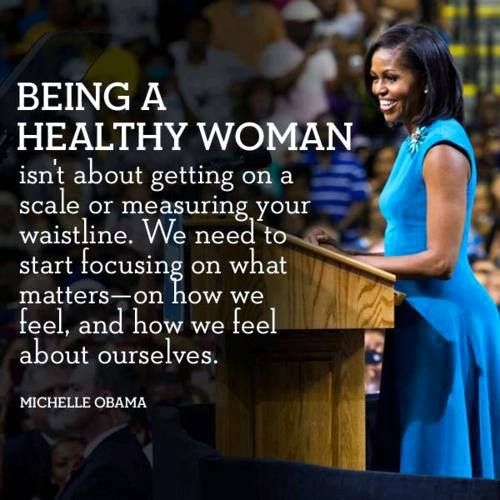The Importance of Health and Well-Being for Women’s Safety

Adya Singh is currently studying at The British School in her final year. In the future, she hopes to delve further into Computer Science and incorporate technological advances in the process of betterment of the society.
The Importance of Health and Well-Being for Women’s Safety
The UN initiative comprising of 17 Sustainable Development Goals is oriented towards the betterment and improvement of the society that we live in. Nevertheless, these goals remain unachievable without the support and action of the general public.
Good Health and Well-Being is defined to be the third Sustainable Development goal and it is directed towards achieving universal health coverage and providing accessible medication and vaccines. Over the past few years, the UN has drastically improved lifestyle conditions such as life expectancy, reduced child mortality rates along with maternal mortality rates and lowered the rate of spread of infections such as HIV and AIDS. Contrastingly, just these facts are not enough to presume the completion of the goal, as there are still strives that need to be made.
Women’s safety is one of the most prevalent issues in the modern day and it is commonly observable whether it is through the presence malnourishment or female infanticide. Statistics suggest that a whopping 56.2% of Indian women suffer from anemia, which could result from poor intake of food lacking in iron. More often than not, it is likely that the problem would go undiagnosed in households, which consequently lowers the quality of life that one can live. Promoting a healthy diet amongst individuals has become a necessity and while more and more schools have begun incorporating this into their education system, there is still a need for awareness in the rural parts of the country.
Similar problems arise when the Body Mass Index is called into question, which is a value indicating the relationship between height and weight. Being underweight is common amongst women living in rural areas, not only as a result of lack of awareness but also due to factors such as unavailability of resources like healthy food and money.
One of the biggest ways that the general public can contribute to the improvement of health for women would be by providing generous donations to a charity of choice. The economic boost could improve the sanitary conditions provided in hospitals, availability of contraceptives and nutritional supplements in order to reduce the mortality rates.
While health factors are in dire need for improvement when it comes to women as problems range from nutritional deficiencies to complications in pregnancies, another aspect which is often left ignored pertains to the mental well-being. From a biological perspective as well, women are more likely to be affected by psychological problems such as depression. This could be due to factors involving hormones and brain chemistry, as there is a fundamental difference in the anatomical structures between the two genders. This is not to say that other factors do not play a role, for example, the socio-cultural exposure that one is provided has a drastic impact on the mental well-being of an individual. Suffering from depression entails feelings of emptiness, insomnia, suicidal thoughts and more.
In the Indian society, there is a lack of recognition of psychological problems as actual illnesses. Those going through psychological disorders are likely to be downplayed and the symptoms are usually blamed on dispositional factors. Women are likely to take to social isolation, which only worsens the situation and their well-being.
Promoting a pleasant environment and supporting community is likely to reduce the impacts of mental illnesses, however, it is necessary to establish when medical intervention becomes a necessity. There is a vast list of psychological issues and it is only comprehensible that one is not aware of the prevalence of each and every disorder. Nevertheless, any drastic changes in behavior or health should be directly followed by advice from a credible doctor.
Not only this, but the safety of the women is called into questions throughout their lives due to violence against women. Starting from the day they are conceived, there is a clear prevalence of aborting the female child, until their final days when they may be sexually abused or be exposed to domestic violence. These various types of violence against women are enough to expose them to a life of permanent dysfunction, ranging from physical disabilities due to acts of physical abuse to suicidal thoughts due to emotional abuse. Furthermore, a large number of women are patients of sexually transmitted diseases such as HIV and AIDS as a consequence of violence such as victims of rape or molestation.
Why are the rates of violence against women so high?
The causes of violence can be rather unsettling and vary depending on the type of violence, which is being committed by the perpetrator. When it comes to aspects such as female abortion or female infanticide, the cultural values make a significant contribution. What is clearly observable in the Indian culture, for example, is the higher valuation of male children when compared to female children, and hence there as an underlying pressure on the expecting mother to give birth to a boy.
Additionally, living in a predominantly patriarchal society has its own consequences. In such a society, it is not uncommon for male members to feel a sense of “ownership” of the female members of their family. In fact, the concept of dowry in itself is clearly representative of the economic value held by girl children. Due to this conception and mindset, male figures have a tendency to justify their acts of violence on their wives or children. More often than not, these the girls have also grown up with a similar mindset and they continue to live in a state of mere acceptance of their situation. This efficient combination of “ownership of women” and acceptance of ownership by women is definitely one of the leading causes why acts of violence may be committed against female members of a male-dominated society.
While it definitely holds true that the third Sustainable Development Goal is applicable to a wider population, there is a clear link drawn to female safety as women are constantly put at a higher risk of being prone to various diseases, disorders and violence. The United Nations is simply an entity directed towards enhancement and improvement, but the actual attainability of the goal does not only rest with them, rather it lies with everybody in a position to make a difference. SafeCity is one of the platforms, which offers an insight into safe and unsafe areas around India. The goal is as simple as promoting female safety and ensuring that anyone venturing the streets is consciously aware of the safety provided.


